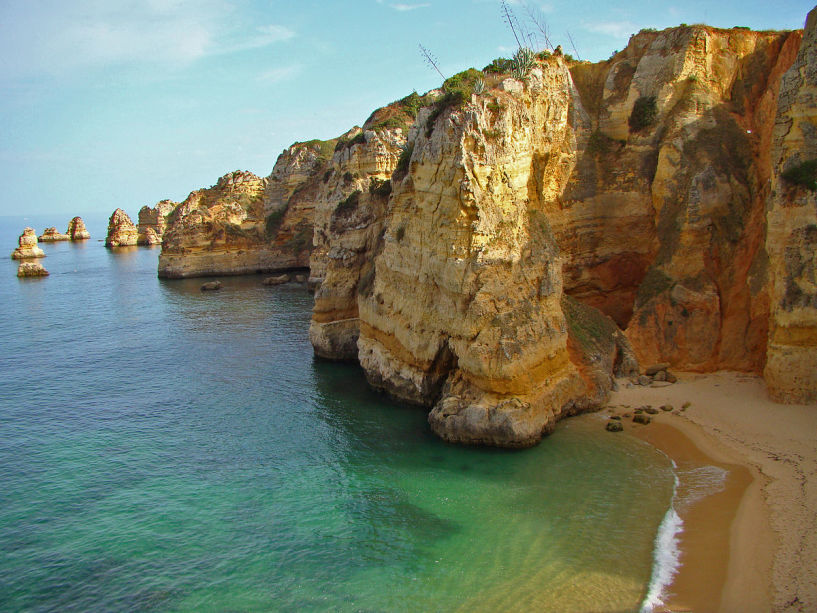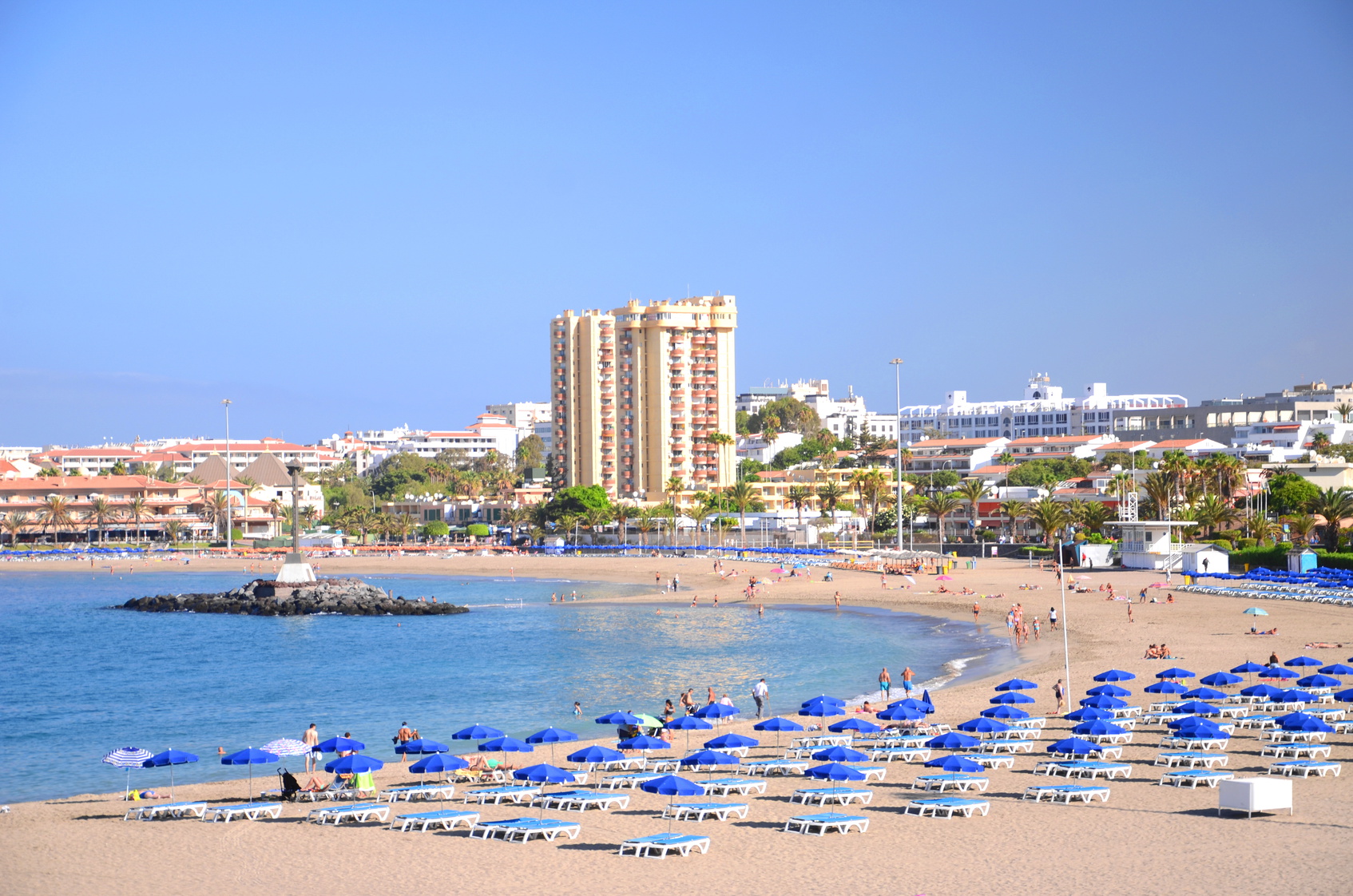Along Portugal’s southern coast, the shoreline rears up out of the sea, setting itself against the sky in dramatic rock formations. Meanwhile, below the water’s surface, countless sea creatures swim, bask and crawl in caves, across reefs and through shipwrecks. It’s no wonder, then, that the Algarve offers some of the best diving in Europe. If you’re visiting Lagos, you won’t regret setting aside some time to explore the region’s dive spots.
The Cliff of Atalaia
Though the cliff, when viewed from above sea-level, is far from the most dramatic part of Portugal’s coastline, it makes for some of the best diving you could ask for. The rocks around it, known as the Garden of Atalaia, harbour a huge quantity of marine life. The Garden alone would be worth the dive, but the best part of Atalaia would have to be its caves, of which there are three. The Cathedral, whose entrance is submerged at high tide but visible at low tide, boasts a high ceiling, stippled with innumerable stalactites. The water itself gives off an eerie glow as light filters into the cave, and you’ll have the chance to see all kinds of sea creatures, including sponges, crabs and lobsters. Travelling through the next cave, Segredo, you’ll see varieties of coral almost never found outside much deeper dives, before you reach the Swiss Cheese cave, which is riddled with holes and where you might see octopus and squid.
Burgau Wreck
The two biggest and most visited shipwrecks in the area are Burgau wreck and the Torvore.
The Burgau wreck is a 30 metre barge. She sunk when carrying a large load of rocks in choppy waters. Due to a failed attempt to beach the barge, she lies very shallow in the water and close to the shore, making her ideal for beginner divers, as well as anyone after a quick but rewarding dive. As the highest points of the vessel are as close to 5 metres to the surface at times, it could even be briefly explored by a skilled free-diver and visually inspected from the surface in good light conditions.
The wreck is home to cuttlefish, eel, octopus, blennies, triggerfish and spider crabs, among other marine life. A novice diver could hope to see a good many of these and have a good view of the ship herself, whereas a more practised diver could explore the interior of the wreck, of which one room can be safely entered and investigated.
[mapsmarker marker=”40″]
Torvore
The other major wreck in the region is the Torvore. In 1917, she was sunk by the most successful U-boat of the First World War, U35. In fact, she was the one of four boats to be sunk by U35 that same day. The crew of U35 boarded the boat and, upon finding that she was headed to the UK, evacuated the crew and sunk her with dynamite.
Much larger than the Burgau wreck, the Norwegian freighter Torvore is 80 metres long and weighs 1667 tons. Although heavily damaged during her sinking and therefore too unstable to enter, she’s an amazing sight, with a broad array of sea life nestling among the huge, still-standing chimneys and tanks. At 30m, Torvore is much deeper than the Burgau wreck and therefore is accessible only to more experienced divers.
Shadow Canyon
This strange formation, comprising two trenches running alongside each other, is notable for its marine life, but the real beauty of this site comes in the way the light filters through the rocks above, giving an astounding interplay of rays and shadows and lending the formation its name.
That’s not to say that you won’t be able to see shrimp, eels and other creatures, but it’s the way the blue-tinted sunlight plays through the canyon that makes the area truly special.
How to get to Lagos
Lagos is served by Faro airport. From there it’s a little over an hour by bus, or you could drive (the quickest route is via the A22, which takes an hour, while the 125 is a slower but more interesting route). We also offer a Faro airport transfer service.
There are several cities from which people frequently travel to Lagos. Faro (the city centre, not the airport) is just under two and a half hours away by bus or just under two hours away by train. You can also reach Lagos from Lisbon, either by train (departing from Entrecampos Station and changing at Tunes) or by bus (direct, 4 hours), and if travelling from Sagres it’s a 30 minute drive along the 125.
[mapsmarker marker=”42″]
Where to stay
Hotel Mar Azul – With its clean-cut, tasteful décor and central location (on foot it’s 15 minutes from the train station and 10 minutes from the bus station), Hotel Mar Azul makes an excellent budget choice. It’s also only five minutes from various cafes and restaurants, making it a well-located hotel for a comfortable, no-frills experience.
Solar de Mos – Family-run and with a rustic feel, there is an unforgettable charm about Solar de Mos. As well as quality rooms, there’s a traditional Algarvean restaurant and an outdoor pool, helping you to really feel at home whenever you want a lazy afternoon. Solar de Mos is a little further out than the above hotels but hardly remote, reachable from the city centre in only around twenty minutes on foot.
Cascade Lifestyle & Wellness Resort – If you’re after a more opulent experience, consider the Cascade Resort. With its panoramic balconies, two top-quality restaurants, self-contained apartments and fully equipped spa, Cascade is perfect for those times when you just want to treat yourself. If you fancy a swim and the pool’s not cutting it, it’s only a short distance from here to the Porto de Mos beach.



